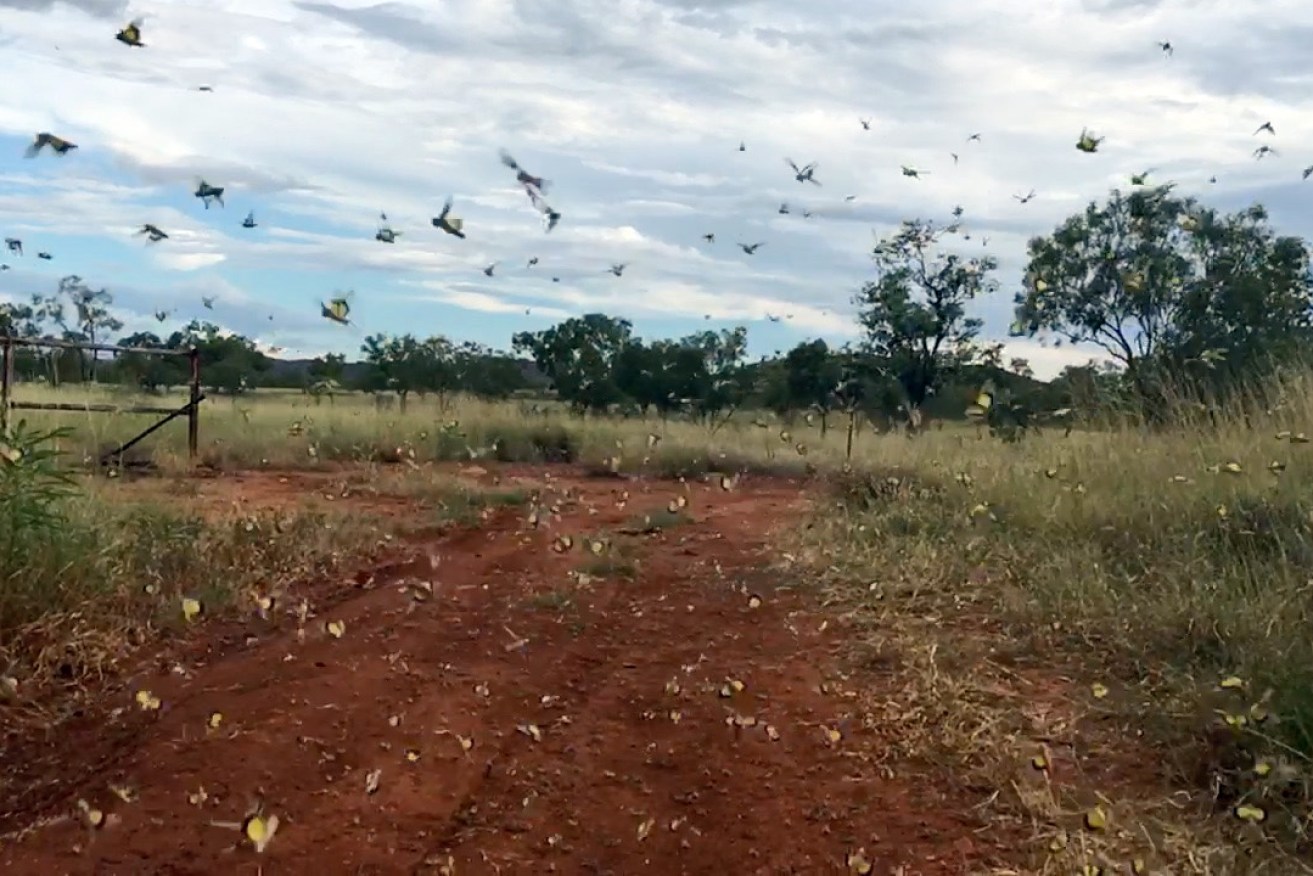Nature on the move in 2016 Waterhouse Prize
A video capturing a mass of swarming grasshoppers is one of six moving-image works selected among finalists in the revamped Waterhouse Natural Science Art Prize this year.

A still from Alana Hunt's video work 'en masse'.
The removal of specific categories and restrictions mean it is the first time the prize, due to be announced next Thursday, has been open to video artwork.
The South Australian Museum, which runs the competition, has also introduced a number of other changes, including making it biennial and reducing the value of the top prize from $50,000 to $30,000 – a move justified by the fact that the museum will no longer keep the winning work.
First-time Waterhouse entrant Alana Hunt’s video en masse (see short excerpt above) was filmed at her home in the remote West Kimberley in WA, and is described as “an ode to the distinct power of small things en masse”.
The artist says the “awe-inspiring” sight of the insects, and the feeling of walking among them, moved her to capture the experience. However, the video was also inspired by events that occurred around the same time in India.
A number of students at the Jawaharlal Nehru University in Delhi, where she studied for her masters in 2008-10, were arrested amid accusations they were “anti-national” after they organised a poetry reading in tribute to a Kashmiri man who had been executed by the state. The student movement spread, fuelled by a wider struggle for freedom of expression, prompting Hunt to contemplate the strength to be found in numbers.
“I was watching my old university turn into quite an inspiring but also a dangerous protest ground,” she says.
“At the same time I had this swarm of grasshoppers flooding the countryside around my house where I was living. I was out walking one afternoon and started to film it.
“I was thinking about the vulnerability of one grasshopper and the vulnerability of one individual … yet together these grasshoppers have this great ability to cut down the thick wet-season grass.”
Hunt’s work often incorporates video, text and “social interaction”. She was shortlisted for the Blake Prize in 2013 for Cups of Nun Chai: A Memorial, which was inspired by the killing of more than 100 civilians in Kashmir in 2010.
“In some ways it [my work] is political, but I also think of it as just responding to things that are happening around me,” she says.
Other moving-image finalists in the 2016 Waterhouse Prize include This Storm is Called Progress, a collaboration between Grayson Cooke and Dugal McKinnon, which features footage of the Naracoorte Caves in South Australia juxtaposed against time-lapse video of satellite images of Antarctic ice shelves and “acoustically framed” by an electronic score.

A still from ‘This Storm is Called Progress’, by Grayson Cooke and Dugal McKinnon.
Artist Debbie Symons has created a work that visualises the predicted consequences of the warming atmosphere on Earth’s biodiversity, while Anne Glam’s evocatively titled Murder Mystery (in the emerging artist category) explores questions about the future of marine environments.
A total of 51 artists, including 13 from South Australia, have been shortlisted for the open category of the 2016 Waterhouse Natural Science Art Prize, with 30 in the emerging category (worth $10,000 in prize money). More than 672 entries were received across both categories, including paintings, sculpture, mixed-media works and video.
Among those shortlisted are Abdul-Rahman Abdullah, whose work was exhibited in the recent 2016 Adelaide Biennial of Australian Art; taxidermy artist Julia deVille; Adelaide ceramic artist Klaus Gutowski and glass artist Nick Mount.
In addition to the Open and Emerging artist prizes, a further $5000 will be awarded through both the People’s Choice Award and a new Scientists’ Choice Award.
Winners will be announced on June 9, with the finalists’ work to be exhibited at the SA Museum from June 10 until July 31.




